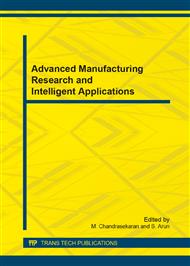p.3
p.7
p.11
p.15
p.19
p.23
p.27
p.33
Numerical Investigation on Heat Transfer of Al2O3/Water Nanofluid in a Shell and Tube Heat Exchanger
Abstract:
In the present work, the effect of nanofluid in a shell and tube heat exchanger was studied numerically. The effects of Reynolds number, volume concentration of suspended nanoparticles on the heat transfer characteristics were investigated using CFD software. Finally, the effect of the nanofluid on Shell and tube heat exchanger performance was studied and compared to that of a conventional fluid (i.e., water).
Info:
Periodical:
Pages:
3-6
Citation:
Online since:
July 2014
Authors:
Keywords:
Price:
Сopyright:
© 2014 Trans Tech Publications Ltd. All Rights Reserved
Share:
Citation:


